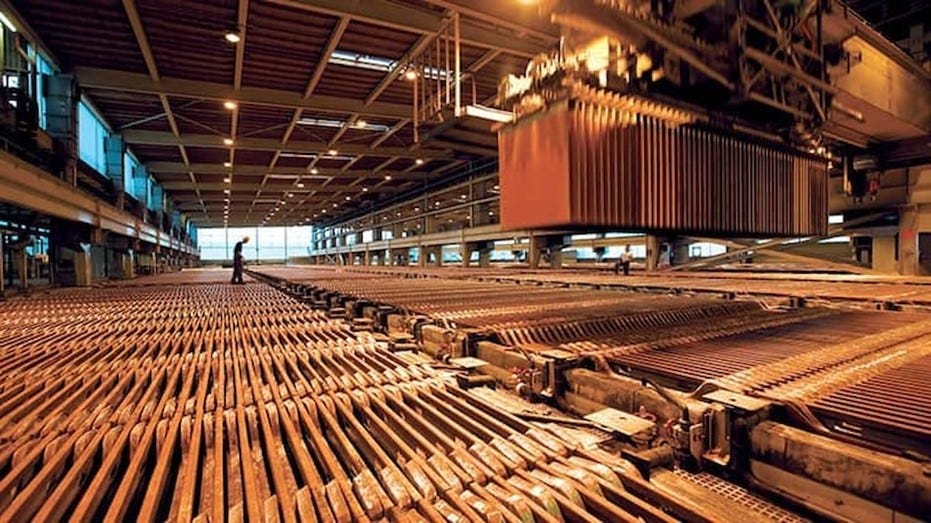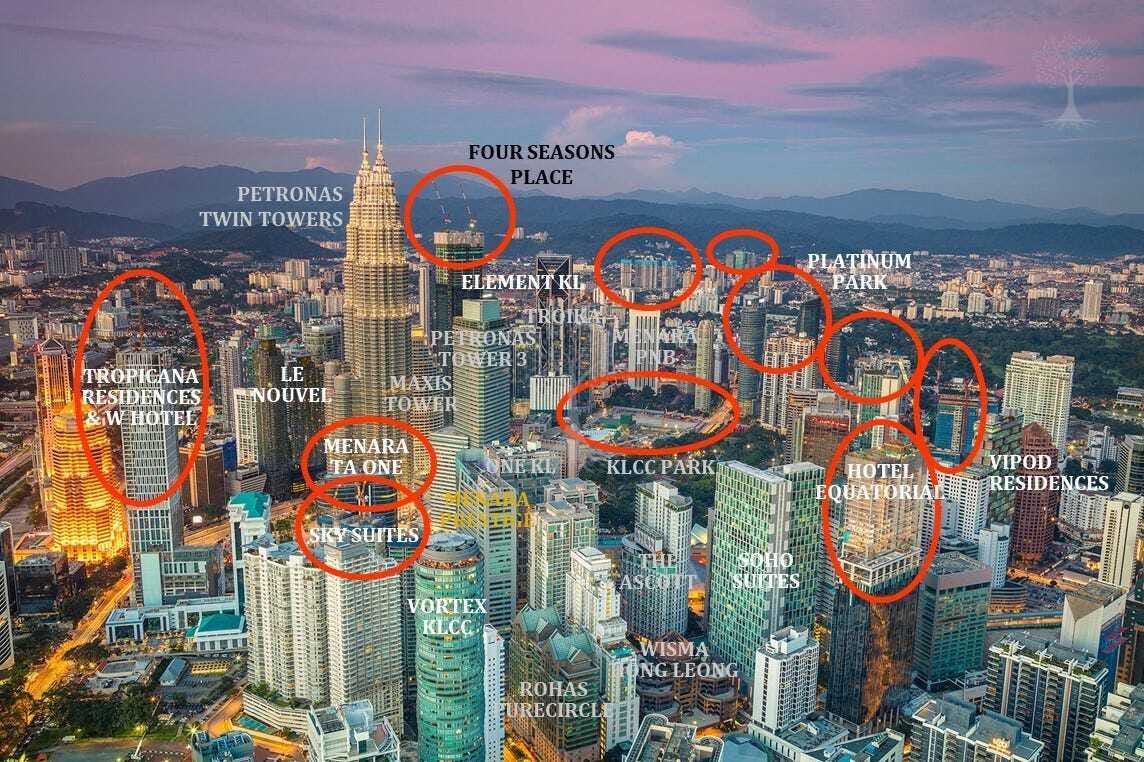'Capital Cycle' Investing: The Market-Cycle Diaries
The importance of understanding cyclicality and its role in investing
This Insight is not investment advice and should not be construed as such. Past performance is not predictive of future results. Fund(s) managed by Seraya Investment may be long or short securities mentioned in this Insight. Any resemblance of people or companies mentioned in this Insight to real entities is purely coincidental. Our full Disclaimer can be found here.
This Insight is an extract adapted from the Panah Fund letter to investors for Q4 2018.1
“To every thing there is a season, and a time to every purpose under the heaven: A time to be born, a time to die; a time to plant, and a time to pluck up that which is planted; A time to kill, and a time to heal; a time to break down, and a time to build up.”
Ecclesiastes 3:1-3 (KJV)
In past letters, we have shared freely some of the mistakes that we have made over the years.2 We have also written about some of the lessons we have tried to learn from those mistakes.
Following on from this self-criticism, and after reflecting on our biggest losing position for 2018 (in a cyclical semiconductor equipment company), we have decided to write about the importance of ‘cycles’ in the context of the fund’s investments.3
While ‘cyclicality’ has always been a relevant consideration for Panah, our ongoing experiences continue to reinforce the importance of properly understanding the cyclical backdrop for investments - past, present and future.
TABLE OF CONTENTS
The Anatomy of a Typical ‘Cycle’
First, what do we mean by a ‘cycle’?
Macro investors might use this term to refer to the overall ‘credit cycle’4 or ‘business cycle’, to describe how the economy as a whole is faring.
In contrast, in this letter we use the term ‘capital investment cycle’ or ‘industry cycle’ on a slightly smaller scale, to describe the typical swings in supply and demand experienced by companies in a specific sector.
These sectoral fluctuations feed into by the larger business cycle itself and are in turn influenced by it. There is of course no reason, however, that the timing of the capital cycle for a specific sector should coincide with the timing of the broader business cycle; indeed, it may differ substantially.
While each industry’s cycle may differ in its magnitude, intensity and details, a basic pattern is usually discernible. For sake of clarity, below we outline the anatomy of a typical cycle. (For those who are already familiar with capital investment cycles, feel free to skip a few paragraphs.)
In the early days of a cyclical upturn in a typical industry, demand rebounds off the lows, benefitting the few companies which have managed to survive the previous downcycle with their production capacity intact. If demand continues to increase, pushing capacity across the industry towards full utilisation, then it is not unusual to see companies adjust prices upwards, thus further boosting revenues. For a company with high fixed costs and a certain amount of financial leverage, even a modest revenue increase leads to a larger inflection in profits.
If demand is expected to remain strong, then fairly soon the dominant companies within the sector usually decide to increase capacity. This might require raising additional capital, which is often (if not always) facilitated by investment bankers. Smaller competitors then also follow suit and commit to capacity expansions, as none of them want to lose market share.
Depending on the sector, there is usually a time lag between the decision to invest and when the new capacity comes online, which can make it hard to judge if new supply will outstrip demand.
Eventually supply does swamp demand, leading to a fall in prices. If this coincides with a more severe decline in demand, then prices may fall further, towards the cash costs of the dominant (i.e., lowest-cost) producer. This usually means financial hardship for all companies in the sector, and perhaps even bankruptcy for those which have overextended themselves.
The survivors struggle on, cutting capacity and trying to survive as they await the next upturn. Rinse and repeat.
Share prices can react in different ways to a company’s progress through the cycle. For highly cyclical stocks with well-rehearsed and frequent cycles, investors are usually more disciplined. In such sectors, earnings multiples are often at their lowest near the cyclical peak, and at their highest (or even negative) near the bottom of the cycle as investors correctly anticipate the ebbs and flows of profits.
For less regular cycles of an uncertain magnitude, however, it is easier for investors to get carried away. As revenues turn up at the start of a cycle, company profits often inflect even more strongly as a result of operating and financial leverage. After a few quarters of such growth, it becomes tempting for investors to extrapolate continued profit increases, which usually elicits a willingness to pay higher earnings multiples.
When the cycle then turns down, share prices react accordingly. There is no simple way to avoid such an outcome, although detailed supply-side research can help.5 Rather than earnings multiples, alternative metrics (such as price-to-sales multiples) can also serve as a useful sanity-check to judge where a company stands in the cycle.
The length and magnitude of a cycle also depends on sector-specific factors such as the degree of industry concentration (thus further emphasising the importance of sector and business model analysis). While consumer durable companies typically experience smaller cycles, sectors such as semi-conductors have historically experienced much larger swings. Note that even relatively ‘stable’ consumer durables companies may experience profit swings as a result of input cost cyclicality.

Occasionally, ‘super-cycles’ can emerge, usually when unexpectedly strong and sustained demand emerges following a long period of supply retrenchment. One example is the decade-long commodities super-cycle from the early-2000s to 2011. This was caused by an extended period of underinvestment in the natural resources sector, followed by the rise of China’s aggressive fixed investment growth model.
While the extent and duration of a cycle is of course not predetermined, it seems as if the existence of the cycle itself is pretty much inescapable, enabled by the fiat monetary system in which we operate, and probably driven by human nature itself.6
Cyclical Lessons for Value Investors
It is seductive to imagine that one can consistently invest through the cycle by simply buying a stock when it is ‘cheap’, either on a ‘deep value’ basis (i.e., when trading at a discount to net assets or even net current assets), or on ‘value’ criteria (i.e., with a high cash flow yield)?7 If one is patient, surely the rest will take care of itself?
While patience is indeed a virtue, our experiences suggest that one key component of successful value investing is to obtain a good understanding of the broader cycle in which a company operates before judging whether a stock really is a ‘bargain’.
Deep value stocks can often stay unexpectedly cheap for years, usually until a catalyst of some sort emerges. That catalyst might come in the form of an engaged shareholder or activist who steps in and encourages management to unlock value by encouraging distributions to shareholders in the form of dividends or buybacks.8
If activism doesn’t work, then how might a catalyst emerge? It might be that the stock is trading at a fraction of book value because its business model has been compromised (perhaps by more innovative competitors), in which case it might require a change of strategy or restructuring before the company can turn itself around, if a turnaround is indeed even possible.
Alternatively, it might be that a deep value stock is suffering temporarily, along with its peers, because of a cyclical downturn. In such cases, it may be necessary to see a supply-side rationalisation before the share price can bottom out. It is not unusual to find ‘value traps’ with ongoing supply-side issues in several of the markets in which we are active. It can be a long wait, however, if one decides to buy without giving sufficient thought to the cyclical backdrop.
If the principal danger in buying ‘deep value’ stocks is getting stuck in a value trap for a few years (i.e., primarily an opportunity cost), cyclical analysis would suggest that the risk in buying ‘value’ stocks (i.e., those with a high cash flow yield) is potentially even greater.
The danger arises because it is tempting to extrapolate earnings into the future without giving sufficient thought as to where a company stands in the cycle. A stock with a trailing free cash flow-to-EV yield of ~25% is cheap so long as those cash flows remain steady. However, if such a company needs to ramp up capex to keep pace with the aggressive capacity expansion of its peers, then the investment case is no longer so clear-cut.
Cyclical analysis thus helps to mitigate the risk of buying a company at or near ‘peak profits’. For these reasons, Panah has consistently sought to apply industry and cyclical analysis to the investment candidates we consider, though of course this is easier in theory than in practice.
Recent Cyclical Reflections
One recent example of how we had insufficient understanding of the broader industry cycle was our investment in a Korean semi-conductor equipment company. We thought that we understood the structural growth story for 3D NAND fairly well and were reasonably confident of the company’s strong competitive position.
Our confidence was reinforced by strong profit growth and an almost fourfold rise in the stock in 2016-17. In 2018, however, the stock fell by around -75% as orders were pushed out and sales fell short of lofty expectations.
In hindsight, however, we did not spend enough time worrying about how semiconductor equipment spending had been growing substantially above trend over the last few years, which should have suggested the potential for a glut. We are now keeping a closer eye on the capex intentions of the firm’s major clients.
Another example of cyclical investing were Panah’s more successful long positions in the Japanese oil refining sector. On the surface, this sector looked unattractive, with long-term negative growth rates, a history of government interference, and high levels of debt. No wonder that share prices had traded sideways for a decade.
In reality, however, the situation started to change early in 2017, when the two largest refinery companies in Japan merged to form an entity with >50% market share. A further merger between the #3 and #4 players in the sector (with a combined market share of >25%) was also in the works.
With an effective duopoly now in control, this allowed for capacity reduction and more pricing discipline, which boosted refining margins dramatically even without any increase in end-demand. The mergers also led to cost synergies. This has allowed the companies to pay down debt and increase shareholder returns. The companies’ share prices reacted well to these developments, which was perhaps unimaginable just two years ago.
Sadly, Panah has not been immune to investing in ‘value traps’ with supply-side issues. One example of such a portfolio position is a Hong Kong-listed State-Owned Enterprise (‘SOE’) shipping services company, which has been a holding in the fund since early-2015.
The company’s main business is paints and coatings for containers and ships. While the shipping downcycle has inevitably had an impact on sales, ship coatings are to a certain extent a recurring-revenue business (i.e., sales do not depend solely on new-build demand). The company also generates sales from ship trading, insurance brokerage, and supply of marine spare parts and fuel.
The main attraction is that the company’s stock has consistently traded significantly cheaper than cash on the balance sheet (currently a ~35% discount to net cash, ~90% of which is held in US Dollar deposit accounts). Enterprise value is thus negative, although cash flow has been consistently positive.
We have anticipated various supply-side catalysts over the last three years. One such potential catalyst was the grand merger of China’s two major shipping companies from 2016. This, however, has not yet had the expected positive impact on shipping services companies (which are now themselves expected to undergo further consolidation).
We also thought that a rebound in trade and container demand from 2016 would help boost profits, but an industry switch away from oil-based and towards water-based paints meant that other companies gained market share.
Now we are hopeful that a catalyst will come in the form of improved shareholder returns, as a new management team – who plan to incentivise themselves with stock options – swings into action.
Meanwhile, we are paid to wait, as the dividend yield stands at >6%. However, given the company’s high levels of excess cash, the dividend payout ratio could be much higher. Shareholders have made their views known, and we are hoping for higher dividend payouts and share buybacks.
Next, we turn to real estate, which is often a contentious topic. Most people have a view on housing prices in the area in which they live, if only because it is one of the few financial assets in which they have a direct interest (either as an owner or a renter).
The enormous global real estate boom over the last three decades – driven primarily by falling interest rates – is no doubt a super-cycle.9 Even within this uptrend there have been smaller cycles, and some of the downturns have been vicious (e.g., US sub-prime in 2006-08, and then the housing busts in Ireland and Spain).
Indeed, real estate busts have the potential to be extraordinarily damaging events. This is because of the long lags between the decision to build and completion, the large amounts of leverage used by most buyers, as well as the long life of real estate assets. While it is relatively easy to shutter excess production capacity, unneeded buildings can stay empty for years and keep prices depressed.
Sky-high housing prices often hit the headlines, especially where residential prices are significantly elevated relative to median income levels. The current poster-child for residential real estate excess is Hong Kong, where it currently takes 22 years of median income to buy a 60m² apartment.
This issue has primarily been caused by an undersupply situation (which appears to have arisen because of the skewed incentives of politicians and developers in the territory). The situation is so serious that it has even become a source of simmering social tension. It will be interesting to see how this evolves, as supply is set to increase in the coming years.
Malaysia provides an interesting counterpoint. Supply increases for most categories of urban real estate over the last five years appear to have comfortably outstripped fundamental demand.10 Across most categories of real estate in major urban areas, vacancy rates stand at >20% with additional supply on a similar scale set to arrive by 2021.

In particular, there seems to be a mismatch between supply and demand for residential real estate, with oversupply in mid- to high-end condominiums and a dearth of cheaper housing available for average wage-earners. Macro-prudential measures from the central bank have prevented weaker borrowers from taking on even more debt, so demand has remained weak.
If the situation for residential real estate in Malaysia is nuanced but worrying, the oversupply outlook for office, retail, hotels and city-centre condos appears to be unambiguously dire. While many of the more experienced developers are now shying away from city centre condo and retail developments (and are more focused on building townships), they have often been replaced by ‘new developers’ with little real estate experience but plenty of willingness to lever up.
The shares of many listed developers have de-rated to low valuations over the last 18 months, and despite the brokers’ entreaties to buy these stocks at ‘bargain prices’, we nevertheless suspect that these will remain ‘value traps’ as the oversupply situation seems set to persist for years.
As and when the economy starts to turn down, we also see a strong chance that bad loan ratios will rise at the local banks. Looking on the bright side, one man’s revenues are another man’s costs, and we expect Malaysian real estate renters to remain happy for the foreseeable future!
Limits of Cyclical Analysis
While we believe it is vital to understand the cyclical backdrop for investments that we make, that does not mean, however, that cyclical analysis is a ‘silver bullet’ that is sure to slay all demons and lead investors to glory.
The timing and magnitude of any cycle is uncertain. Oversupply situations (i.e., downcycles) can persist in certain industries for long periods of time. This is especially true if investors without a strong profit motive insist on keeping zombie companies on ‘life support’ rather than allowing unprofitable capacity to be closed.
This problem can be exacerbated by government intervention in certain sectors, and even by SOEs which often have a primary mandate to provide employment rather than generate profits. (Eventually, this might even create geopolitical tensions if other countries perceive that the SOEs from such nations are attempting to export and dump their excess production abroad, thereby adversely affecting their own domestic producers – but that’s a different story.)
In situations where firms (which are not primarily driven by the profit motive) keep uneconomic capacity alive, it becomes difficult for creative destruction to play its role in allowing the cycle to bottom out. This seems to be especially true when the cost-of-capital is held artificially low for a long period of time, as the opportunity cost of maintaining excess capacity is lower than it should be.
Loose monetary policy has also no doubt contributed to a greater willingness for growth investors (i.e., venture capital funds) to channel money towards companies which use ‘new technology’ to outcompete more traditional rivals in sectors such as retail, advertising and media, all without a need to produce any cash flow in the near-term.
In such cases, it has been a mistake to assume that there will be a cyclical rebound for the old economy incumbents, and many are now struggling for survival.11 It is also important, however, to note that such a dynamic might not last forever. Indeed, the venture capital industry itself seems to be in its own super-cycle at present. This may well falter as capital becomes more scarce,12 which in turn might slow the pace of ‘disruption’.
Finally, it is also very important to note that certain high-flying companies are able to ‘cheat the cycle’ for longer than others, if other potential competitors are unwilling or unable to compete away their excess economic returns.
Such an advantage might be because of a management team with superior capital allocation skills13 or because these companies enjoy certain barriers-to-entry (whether owing to technological prowess, scale, or regulations, etc.) Such advantages allow these companies to compound returns at high rates for an extended period of time.
Indeed, here at Panah, we spend the majority of our time searching for and trying to understand ‘compounder’ companies of this sort. While valuations are often rich for such high-quality companies, we find enough reasonably valued opportunities to keep us busy.
Thank you for reading.
Andrew Limond
The original source material has been edited for spelling, punctuation, grammar and clarity. Photographs, illustrations, diagrams and references have been updated to ensure relevance. Copies of the original quarterly letter source material are available to investors on request.
For more information, please see the Panah Fund letters to investors for Q1 2016, Q2 2017 and Q2 2018 as well as the following Seraya Insights: ‘What Happens When We Get It Wrong’, ‘The Art of the (Graceful?) Exit’, and ‘Shareholder Engagement & Activism in Asia’. In several other Panah Fund letter to investors (including the letters for Q4 2017 and Q4 2018), we describe the mistakes we made in previous years and the lessons we are trying to learn; these letters have not been adapted into Seraya Insights but are available to investors on request.
Our thinking on this topic is influenced by the superb books ‘Capital Account’ (2004) and ‘Capital Returns’ (2015), both edited by Edward Chancellor. These illustrate the role of ‘capital cycle’ analysis in the investment approach of Marathon Asset Management.
Howard Marks covers this topic from a credit perspective in his latest book, ‘Mastering the Market Cycle: Getting the Odds on Your Side’ (2018).
We find that primary research (especially focusing on the supply-side) can yield useful insights that often lead to a differentiated viewpoint. In contrast, brokerage house analysts tend to focus on creating detailed demand projections that stretch many years into the future, which is of course an exercise fraught with pitfalls.
Attempts to deny the existence of cyclicality usually end in tears. Even some of the best investors fall victim to the temptation to suggest that ‘this time is different’, especially following strong ‘super-cycle’ performance within a particular sector. Jeremy Grantham’s Malthusian structural bullish call on commodities in April 2011 is a case-in-point (‘Time to Wake Up: Days of Abundant Resources and Falling Prices Are Over Forever’) - this letter actually marked the top of the commodities super-cycle which began in the early-2000s.
This is the essence of Panah’s value investment strategy, as set out in the Panah letter to investors for Q3 2017 and the following Seraya Insight: ‘The Trials & Temptations of a Value Investor’.
In this Insight, we do not take into consideration fraudulent stocks which appear cheap but report false financials. For an example of Panah’s activism in a Japanese refrigeration stock, please see the Panah Fund letter to investors for Q2 2018 and the following Seraya Insight: ‘Shareholder Engagement & Activism in Asia’.
This paper cover some of the reasons for the super-cycle in housing. We also see loose monetary policy as a prime suspect.
Data availability is poor, and official data has numerous methodology changes which require heavy adjustments.
For more information on the venture capital impact on old economy companies and the challenges of venture capital investing, see ‘Unicorns, Cheshire Cats, and the New Dilemmas of Entrepreneurial Finance’.
For instance, if Saudi Arabia became (hypothetically) unwilling or unable to provide the capital for the #2 SoftBank Vision Fund, this entity would no longer be able to support late-stage VC funding valuations, and this would likely also (eventually) have a knock-on effect on early-stage investment activity.
For more information regarding our thoughts on capital allocation, see the Panah letter to investors for Q4 2016 and the following Seraya Insight: ‘“Capital Allocators” versus “Capital Alligators”’.





